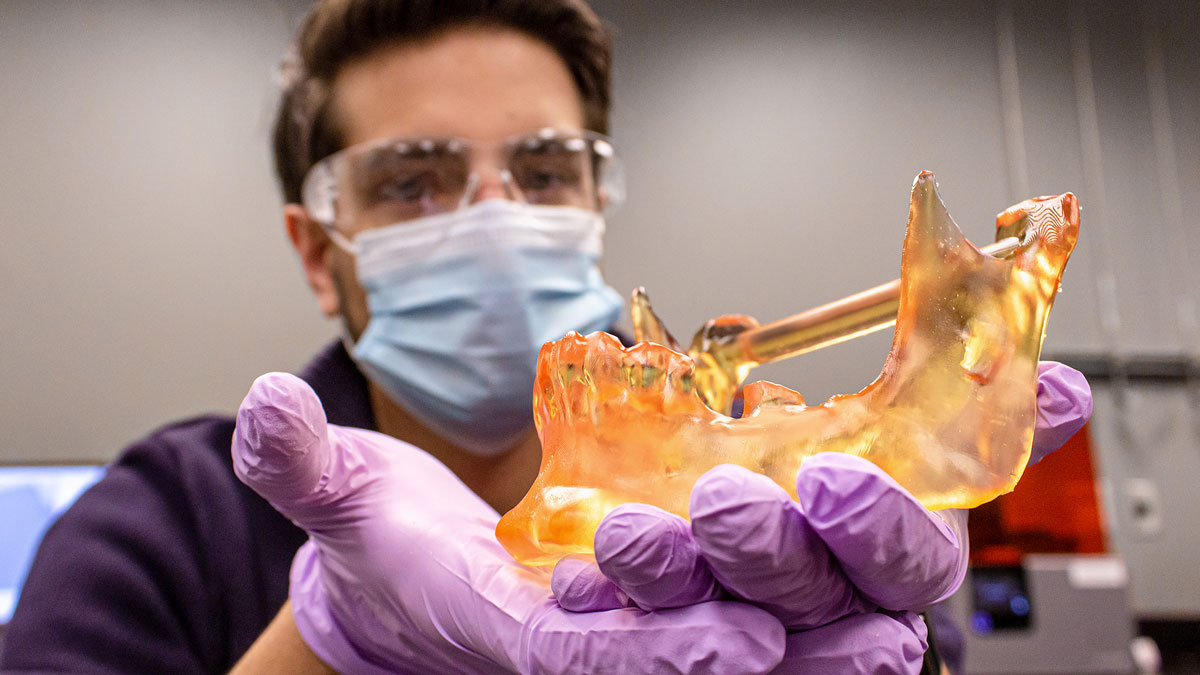New tech center adds another dimension to teaching medical students
 Wearing virtual reality headsets, medical students at The Ohio State University College of Medicine have practiced responding to the scene of a subway bombing with a lot of people injured and limited time.
Wearing virtual reality headsets, medical students at The Ohio State University College of Medicine have practiced responding to the scene of a subway bombing with a lot of people injured and limited time.
They’ve looked inside a human body, peeling back layers of skin, muscle and nerves without using a knife.
Faculty at the college now have easy access to VR, 3D printers, recording equipment and other technology for teaching anatomy, emergency preparedness and other critical subjects.
On the 4th floor of Prior Hall, a new technology center opened last year, welcoming students and faculty to train and use the equipment. It’s called the EdTech Incubator.
There, students and faculty can 3D print anything that might help them learn — organs in the body, prosthetics, a tumor. Using virtual reality, students can explore on their own the different tissues of the body and how they’re arranged.
“VR allows students to ‘remove’ multiple structures, piece by piece as they look deeper and deeper into the body, and then with a single click of the controller they can reset the model,” says Derek Harmon, PhD, a clinical associate professor of anatomy.
Students in his classes can follow a guided lesson that will instruct them on what tissues to identify, select and remove from the model, and along the way will ask them relevant questions to consider about each tissue.
Also in Dr. Harmon’s classes, students use a CT or MRI scan to 3D print the body part that was scanned to more closely study it.
In an anatomy visualization lab, students can isolate organs and organ systems. They can turn off the visibility of the muscle tissue and leave the skeletal and nervous system viewable. They can also examine interactive cross sections of a body — from any angle they wish.
The technology will supplement, rather than replace, gross anatomy labs; students still will have a chance to dissect cadavers.
Using VR applications, some College of Medicine faculty have taught students to respond to various scenarios where they’ll need to make rapid decisions on how to help. Instructors in other health science colleges across campus can also tap into the EdTech Incubator’s offerings to use in their lesson plans.
“It’s an amazing resource for both the faculty and the students,” says Kellen Maicher, MFA, MS, coordinator of the EdTech Incubator. “It allows them to visualize things in ways they couldn’t really do before.”
The EdTech Incubator also welcomes students to bring their ideas, such as for a new interactive VR application, Maicher says.
“Everyone has ideas,” he says. “That’s where we really hope the best innovation will come from.”
Explore more stories of innovation, clinical care, education and community outreach at The Ohio State University College of Medicine.
VIEW ANNUAL REPORT
